Can A Pool Help Manage Joint Pain? What To Know About Hydrotherapy At Home
Joint pain affects millions of people, often limiting mobility and reducing quality of life. Whether caused by arthritis, injury or age-related wear and tear, managing joint discomfort is a priority for many. One effective and increasingly popular method to ease joint pain is hydrotherapy — using water-based exercises and treatments to improve movement, reduce stiffness and relieve pain. If you have a pool at home or are considering installing one, you might wonder: can a pool help manage joint pain? The answer is yes. Hydrotherapy performed in your own backyard pool offers many benefits and practical advantages. This article explores how hydrotherapy works, what to consider when using your pool for joint pain management, and tips for safe and effective home treatment.
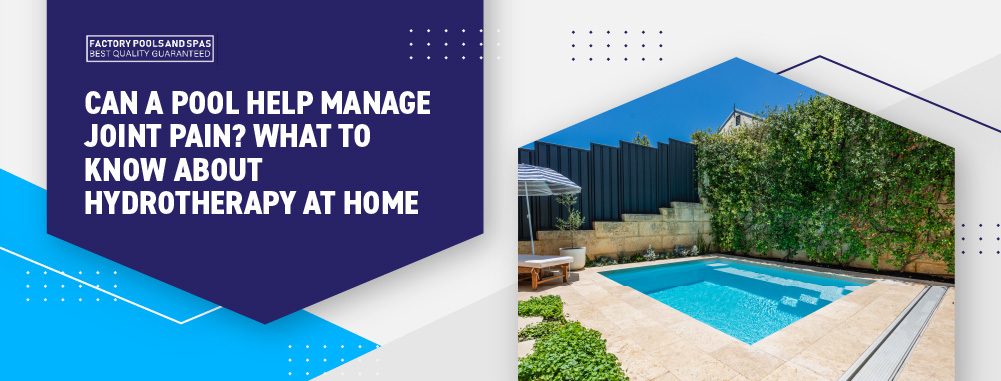
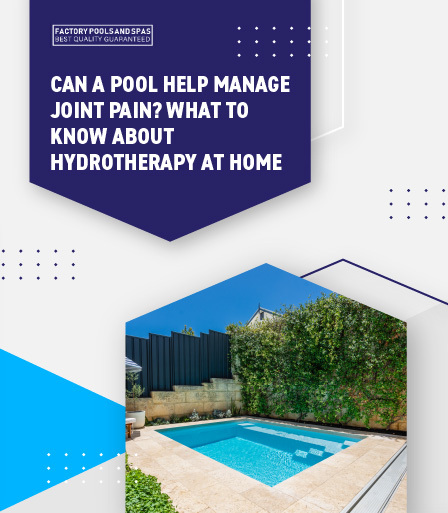
What Is Hydrotherapy?
Hydrotherapy is the use of water to relieve pain and promote physical health. It combines the natural properties of water — buoyancy, resistance, warmth and pressure — with targeted exercises to improve joint function.
Buoyancy: Water supports your body weight, reducing stress on joints and allowing easier movement.
Resistance: Moving through water provides gentle resistance, strengthening muscles without impact.
Warmth: Warm water relaxes muscles, increases circulation and reduces stiffness.
Hydrostatic pressure: The pressure exerted by water can decrease swelling and improve joint stability.
Why Use Hydrotherapy for Joint Pain?
Hydrotherapy is especially beneficial for joint pain sufferers because it enables movement without the usual strain associated with weight-bearing activities. This makes it ideal for:
Arthritis patients: Eases stiffness and pain, improves range of motion.
Post-injury recovery: Supports healing by promoting gentle mobilisation.
Chronic pain conditions: Provides low-impact exercise options.
Elderly individuals: Enhances balance and mobility safely.
Advantages of Hydrotherapy at Home
Having a pool at home means you can incorporate hydrotherapy into your daily routine with convenience and comfort.
Flexible timing: Exercise whenever suits you, without booking classes or travel.
Privacy: Perform therapy in your own space, at your own pace.
Consistency: Regular hydrotherapy sessions improve long-term outcomes.
Cost-effective: Over time, home hydrotherapy can reduce expenses compared to clinic visits.
Customised environment: Control water temperature and conditions to suit your needs.
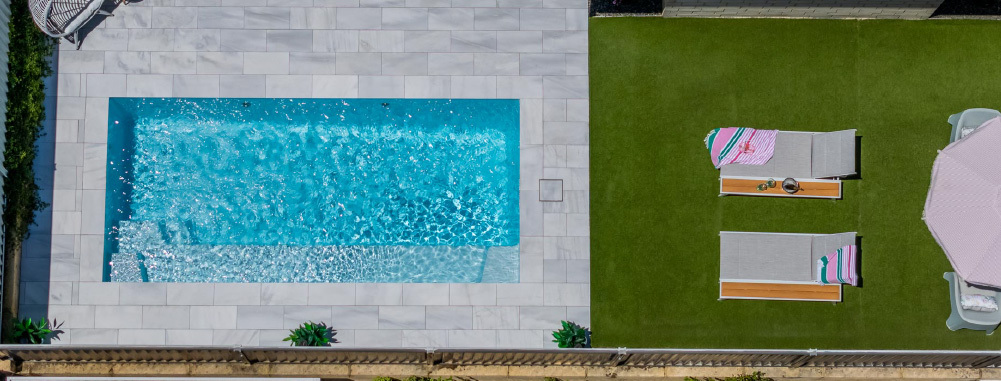
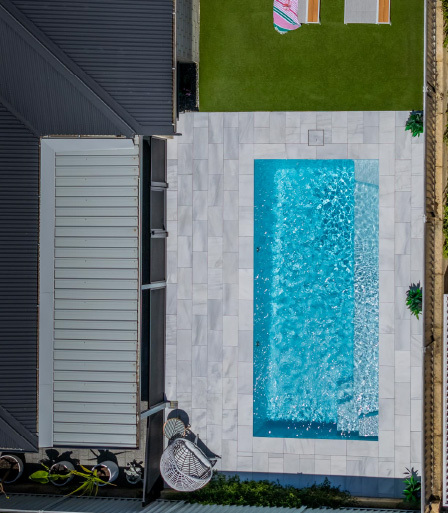
What Type of Pool Works Best?
While any pool can be useful, certain features make a pool more suited to hydrotherapy:
Heated pools: Warm water (around 32–35°C) is ideal for relaxing muscles and soothing joints.
Shallow areas: Allow easy standing and walking exercises.
Accessible entry: Steps, ramps or pool lifts help users with mobility challenges.
Safety features: Non-slip surfaces, handrails and fencing enhance safety during therapy.
Getting Started With Hydrotherapy at Home
If you’re new to hydrotherapy, here are steps to begin safely and effectively:
Consult your healthcare provider: Get advice tailored to your specific condition and limitations.
Set goals: Identify what you want to achieve — pain relief, improved mobility, strength or balance.
Warm up: Spend a few minutes walking or gently moving in warm water to prepare your joints.
Start slow: Begin with simple exercises like leg lifts, knee bends, or walking in water.
Progress gradually: Increase duration and intensity as your comfort and strength improve.
Cool down: Finish with gentle stretches or floating to relax muscles.
Sample Hydrotherapy Exercises for Joint Pain
Here are some gentle water exercises suitable for managing joint pain:
Water walking: Walk slowly across the shallow end, lifting knees high and swinging arms.
Leg lifts: Holding the pool edge, lift legs sideways or backward to strengthen hips and thighs.
Heel raises: Stand near the edge and rise onto your toes, then lower slowly to improve ankle strength.
Knee bends: Bend knees slightly while standing in chest-deep water to reduce joint pressure.
Arm circles: Extend arms to the sides and make small circles to improve shoulder mobility.
Marching in place: Lift knees alternately while standing, mimicking marching.
Safety Tips for Home Hydrotherapy
To ensure safe hydrotherapy sessions:
Never exercise alone: Have someone nearby or within easy reach, especially if balance or mobility is limited.
Avoid overheating: Keep sessions around 20-30 minutes to prevent fatigue.
Stay hydrated: Drink water before and after your session.
Use proper entry and exit points: Avoid slipping by using handrails or steps.
Listen to your body: Stop if you feel pain, dizziness or discomfort.
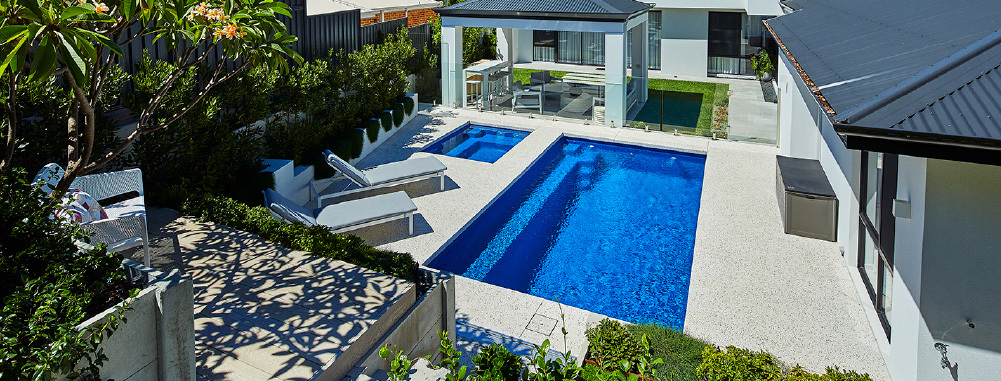

Additional Benefits of Pool Use for Joint Health
Beyond hydrotherapy exercises, having a pool can promote overall joint health through:
Relaxation: Floating and gentle movement reduce muscle tension and stress.
Weight management: Swimming and water exercises support healthy weight, easing joint load.
Improved sleep: Regular pool activity can contribute to better sleep quality.
Mental health boost: The calming effect of water improves mood and reduces anxiety.
Considerations Before Installing a Pool for Hydrotherapy
If you’re thinking about installing a pool with joint pain management in mind, keep these factors in mind:
Pool size and depth: Ensure it has shallow, accessible areas.
Heating options: Invest in reliable heating systems for year-round use.
Entry aids: Steps, ramps or lifts should meet your mobility needs.
Maintenance: Keep water clean and balanced to prevent skin irritation.
Safety: Comply with local regulations for fencing and supervision.
When to Seek Professional Hydrotherapy
While home hydrotherapy is great for ongoing management, professional guidance can enhance results:
Physiotherapists: Can tailor exercises to your condition and monitor progress.
Hydrotherapy pools: Clinics often have specialised pools and equipment.
Rehabilitation programs: Structured therapy after surgery or injury.
Final Thoughts
A home pool can be a valuable tool in managing joint pain through hydrotherapy. The water’s natural properties make movement easier and less painful, encouraging gentle exercise that improves mobility and strength.
Starting hydrotherapy at home requires some planning and safety considerations, but the convenience and comfort of your own pool make it an accessible option. Always consult healthcare professionals before beginning new exercise routines, and listen to your body throughout.
With regular, mindful use, your pool can become a supportive space for joint pain relief and improved quality of life.
To start your journey today with us, click here for a FAST FREE QUOTE to get your fibreglass pool today!

